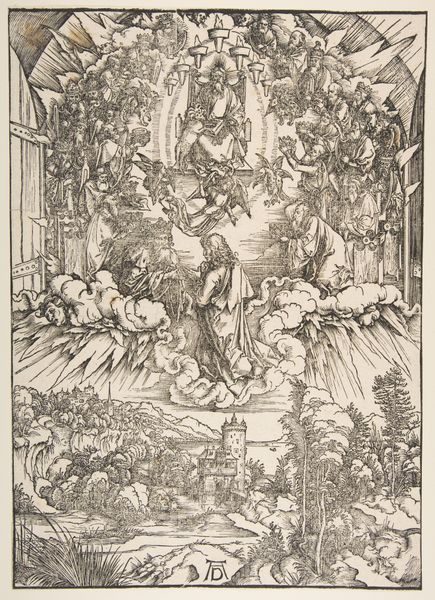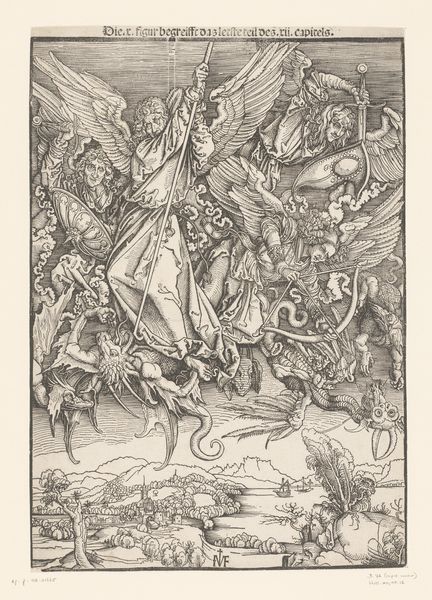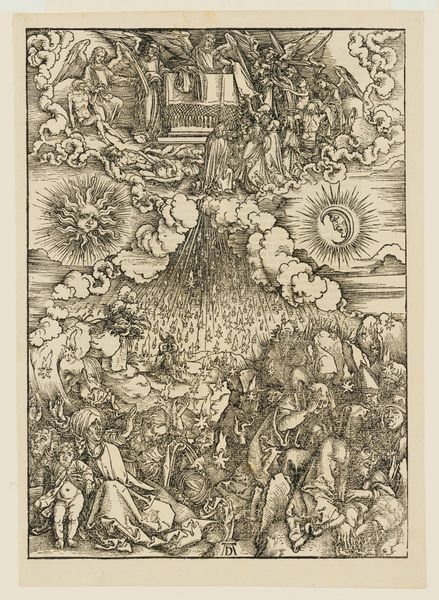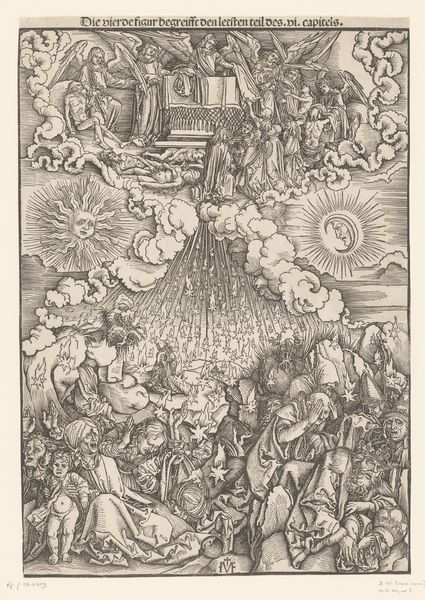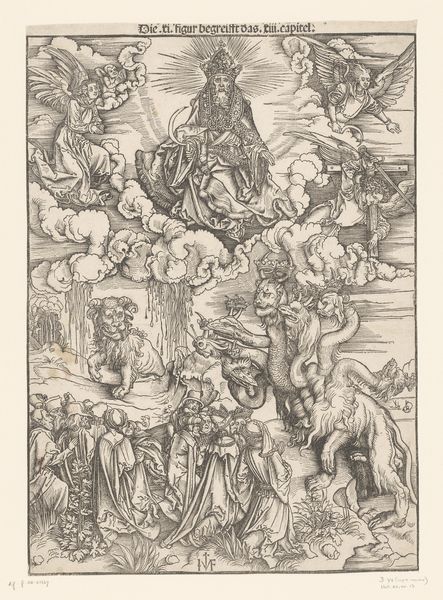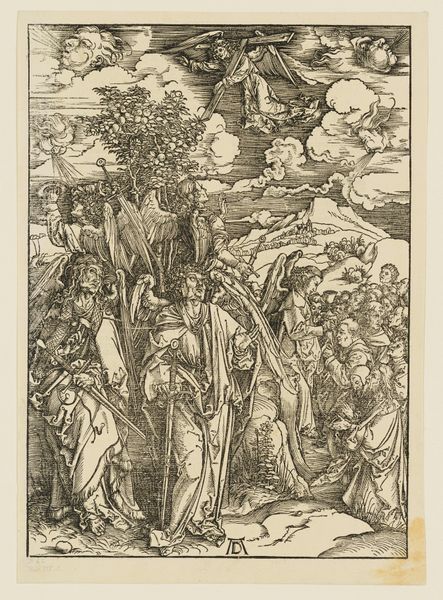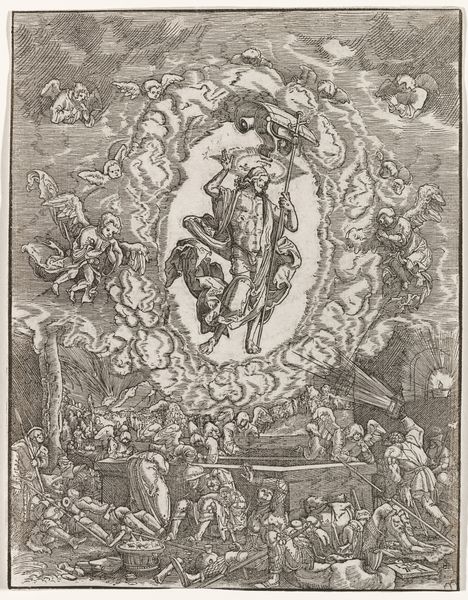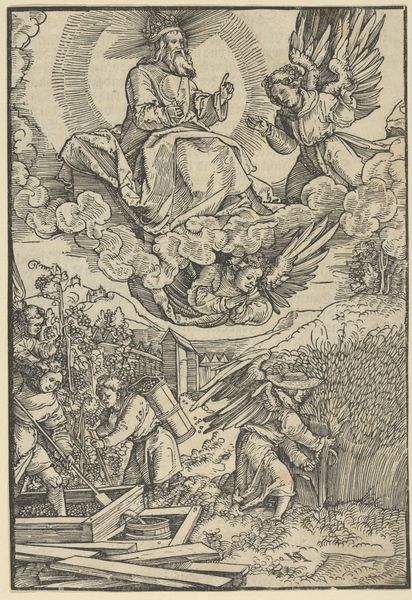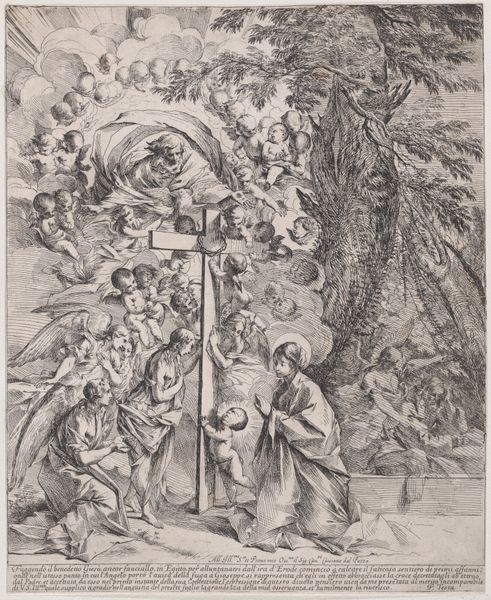
drawing, print, paper, ink, engraving
#
drawing
#
narrative-art
#
pen drawing
# print
#
landscape
#
figuration
#
paper
#
ink line art
#
ink
#
line
#
history-painting
#
northern-renaissance
#
engraving
#
miniature
Dimensions: height 390 mm, width 280 mm
Copyright: Rijks Museum: Open Domain
Editor: This intricate print, "Johannes de Evangelist voor God en de ouderlingen," made by Ieronimus Greff von Frankfurt in 1502, depicts John the Evangelist before God. The detail is just incredible, but I am finding the iconography a bit dense. How do you interpret this work within its historical context? Curator: It's a fascinating piece, isn't it? Given its creation during the early 16th century, at the cusp of the Reformation, it’s worth considering this print’s potential as a form of religious communication. Who do you think was the target audience for prints like this? Editor: I would guess religious scholars, but perhaps also wealthy patrons looking for devotional aids? Curator: Precisely. Prints such as these became increasingly popular for personal devotion. The imagery and symbolism were carefully crafted to reflect contemporary religious and political ideas. It is very detailed, and the presence of both earthly and divine realms suggests an emphasis on spiritual mediation and, perhaps, the artist's perspective on salvation and moral guidance within a society undergoing rapid change. The figure of Saint John, elevated and in direct communion with God, mirrors this notion. Editor: So, it's not just a religious image but also a reflection of the changing social and political landscape of the time? I suppose making prints also meant more access to religious art. Curator: Exactly. Printmaking made religious imagery accessible to a wider audience, playing a significant role in shaping popular belief and discourse during this transformative period. What would it mean to interpret such a print as propaganda? Editor: Wow, that gives me a whole new appreciation for it. Thanks for helping me look at it from a broader socio-political view. Curator: My pleasure! I found this dialogue quite helpful as well in expanding how this print might relate to the emerging role of the artist in shaping cultural values.
Comments
No comments
Be the first to comment and join the conversation on the ultimate creative platform.

